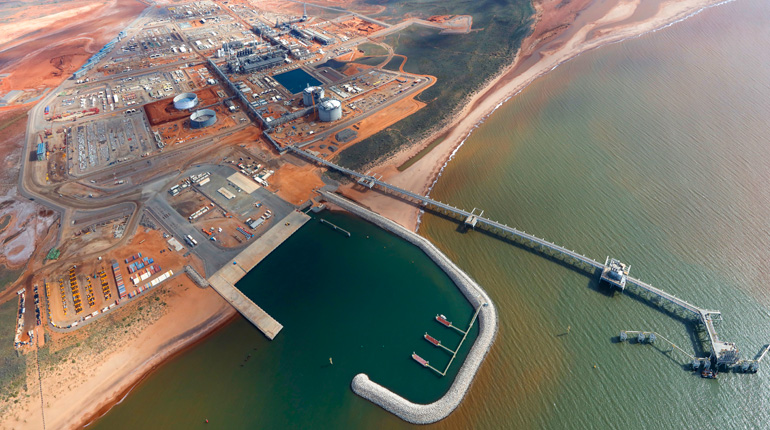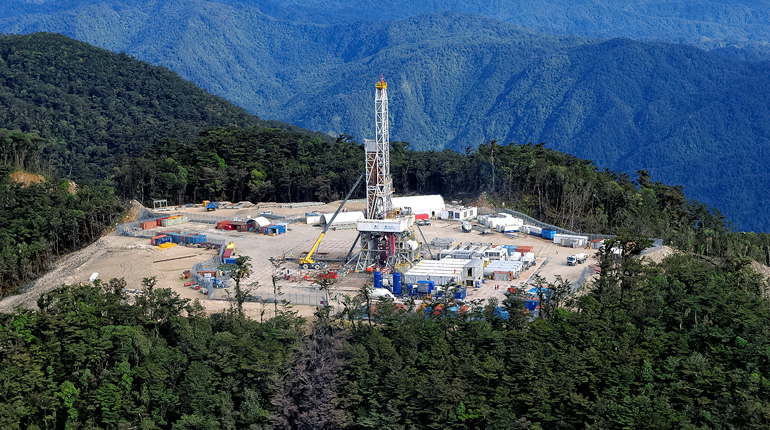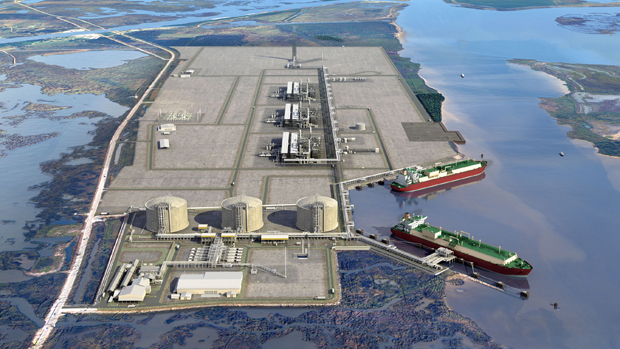 Construction issues have pushed back Wheatstone’s startup. (Chevron)
Construction issues have pushed back Wheatstone’s startup. (Chevron)
Chevron has been under pressure in Australia from cost, labour and construction issues at its remote Barrow Island-based Gorgon LNG development in Western Australia. Now the group is rumoured to be facing capex overruns at its second WA-based LNG project, Wheatstone.
This week, Wood Mackenzie said it expected Wheatstone to cost more than originally forecast, but that it will also produce marginally more. "We have remodelled Wheatstone LNG economics, increasing our estimate of capex by 15% to US$36 billion. We have increased our expected output to 9 mtpa, in line with the performance seen at other Australian LNG projects. We expect first cargo in H2 2017," Wood Mackenzie said in its latest analysis, adding that it expects Wheatstone’s second train to come onstream in early 2018.
Quoting unnamed sources, The West Australian newspaper this week reported that the Wheatstone joint venture partners could meet within weeks to sign off on a revised budget up to US$10 billion higher than planned, and that Chevron has started preparing documents to seek approval from its board for funding support.
Ben Tsocanos, primary credit analyst at Standard & Poor’s, told Interfax Natural Gas Daily that "to the extent that Wheatstone is delayed or runs over budget, it will have a negative effect on profitability".
"Locking in a lower return on invested capital as a result of heavier investment and lower prices for a longer period than the industry had expected won’t please existing investors or entice new ones so readily," S&P said in an April 2016 rating alert on the global LNG market.
Nonetheless, Tsocanos noted Chevron is "applying a lot of lessons learned from Gorgon in terms of doing the pre-engineering work and just in general, not making the same mistakes [at Wheatstone]".
Chevron’s outlook
For now, Chevron is sticking to its US$30.5 billion cost estimate for Wheatstone, despite announcing last January that the project would start up six months later than planned because of construction issues. Costs could be hit by slower-than-expected productivity and delays at the Malaysian yard that is fabricating some of Wheatstone’s modules.
Although there are challenges associated with Wheatstone’s construction phase, the long-term outlook for the project is sound, particularly as it will serve a market that is set to see a rebound in demand next decade, S&P believes. "Over the next several years, LNG prices are probably not going to be that great. This is a multi-decade lifespan so the long-term prospects for LNG are good," Tsocanos said.
"We continue to make steady progress against key milestones on the Wheatstone Project. Our outlook for first LNG remains mid-2017 for Train 1," a Chevron spokesperson told Interfax Natural Gas Daily. "Wheatstone construction is proceeding within the original project funding sanctioned at FID in 2011. As part of prudent project management, Chevron continually reviews Wheatstone project costs and reports regularly to the joint venture participants."
LNG sales
Chevron has pre-sold more than 85% of its equity LNG from Wheatstone’s first train to "premier" LNG buyers, which include Japanese utilities and trading houses Tepco, Kyushu Electric, Chubu Electric and Tohoku Electric, in addition to China Huadian Corp. and Shell.
However, its exposure to Japan – where buyers are becoming more vocal in challenging long-term LNG contract prices – could cut into Chevron’s profitability. Combined with any cost blowouts, this could leave less financial headroom for Chevron at Wheatstone. The poor outlook for oil-indexed gas prices could also make it more challenging for Chevron to pre-sell LNG from Wheatstone’s second train.
S&P has assumed that Brent will average US$40 per barrel for the remainder of 2016, rising to US$50/bbl in 2018. The rating agency is also projecting that global supply will increase by nearly 40% between 2015 and 2020 – from roughly 330 mtpa to 460 mtpa – on the basis of projects already under construction.
After announcing a delay in commissioning earlier this year, Wheatstone’s first output is due in mid-2017 from its onshore processing facility in WA’s Pilbara region. Chevron’s offshore Wheatstone and Iago fields will supply 80% of the gas, with the remaining 20% coming from Woodside’s Julimar and Brunello fields. The gas will be processed in two trains with a combined capacity of 8.9 mtpa.
Wheatstone LNG’s total capacity could go as high as 25 mtpa through six possible trains of 4-7 mtpa each. But given the current climate, expansion to this size looks unlikely in the medium term.
Chevron is the operator at Wheatstone with a 64.14% share. It is in partnership with Kuwait Foreign Petroleum Exploration Co. (13.4%), Woodside Petroleum (13%), PE Wheatstone (8%) and Kyushu Electric (1.46%).








Talk to us
Natural Gas Daily welcomes your comments. Email us at [email protected].